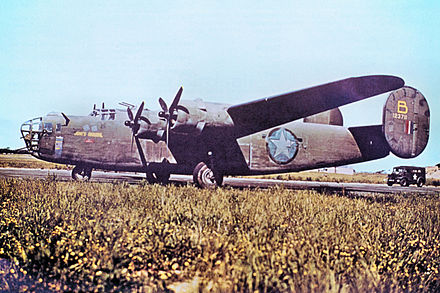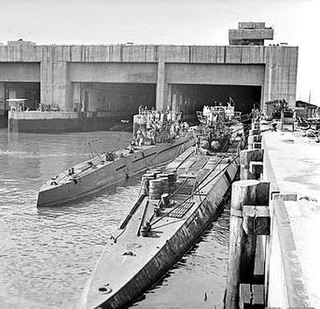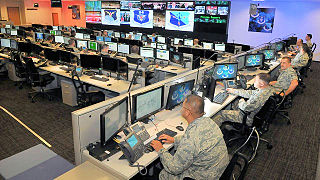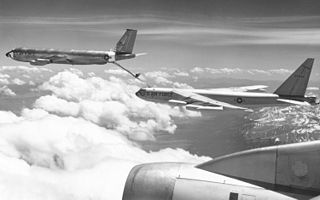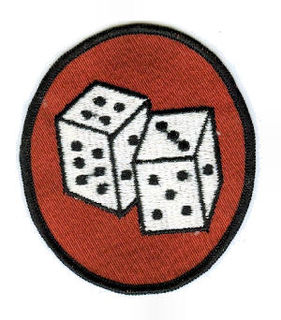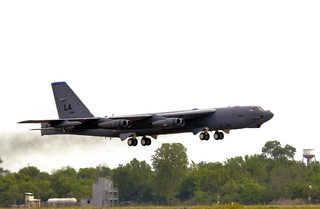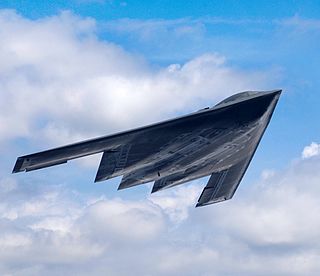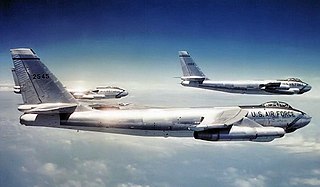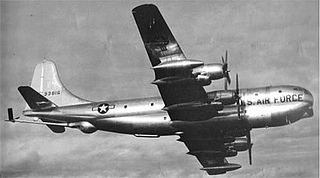This article includes a list of references, but its sources remain unclear because it has insufficient inline citations .(March 2017) (Learn how and when to remove this template message) |
| 93d Operations Group | |
|---|---|
 Wing E-8 J-STARS aircraft | |
| Active | 1942–1952; 1991–1995; 1996–2002 |
| Country | |
| Branch | |
| Role | Air control |
| Nickname(s) | Traveling Circus (World War II) Blaze[ citation needed ] |
| Decorations | Distinguished Unit Citation [1] |
| Insignia | |
| 93d Operations Group emblem [1] [note 1] |  |
| 93d Bombardment Group emblem [2] | 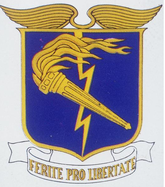 |
The 93d Operations Group is an inactive United States Air Force unit. Its last assignment was with the 93d Air Control Wing, stationed at Robins Air Force Base, Georgia. The unit was inactivated on 1 October 2002.

The United States Air Force (USAF) is the aerial and space warfare service branch of the United States Armed Forces. It is one of the five branches of the United States Armed Forces, and one of the seven American uniformed services. Initially formed as a part of the United States Army on 1 August 1907, the USAF was established as a separate branch of the U.S. Armed Forces on 18 September 1947 with the passing of the National Security Act of 1947. It is the youngest branch of the U.S. Armed Forces, and the fourth in order of precedence. The USAF is the largest and most technologically advanced air force in the world. The Air Force articulates its core missions as air and space superiority, global integrated intelligence, surveillance, and reconnaissance, rapid global mobility, global strike, and command and control.

Robins Air Force Base is a major United States Air Force installation located in Houston County, Georgia, United States. The base is located just east of and adjacent to the city of Warner Robins, 18 mi (29 km) south-southeast of Macon and approximately 100 mi (160 km) south-southeast of Atlanta, Georgia. The base is named in honor of Brig Gen Augustine Warner Robins, the Air Force's "father of logistics".
Contents
- History
- World War II
- Strategic Air Command
- Reactivation
- Lineage
- Assignments
- Components
- Stations
- Aircraft
- References
- Bibliography
- External links
During World War II, the group's predecessor unit, the 93d Bombardment Group was the first VIII Bomber Command Consolidated B-24 Liberator heavy bombardment groups to carry out strategic bombardment operations against targets in Occupied Europe and Nazi Germany from RAF Alconbury, England. The group became operational with a mission over Occupied France on 9 October 1942.
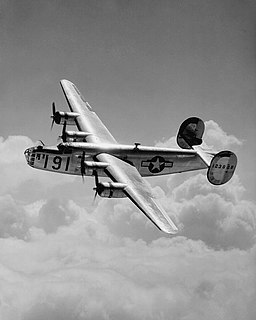
The Consolidated B-24 Liberator is an American heavy bomber, designed by Consolidated Aircraft of San Diego, California. It was known within the company as the Model 32, and some initial production aircraft were laid down as export models designated as various LB-30s, in the Land Bomber design category.

Nazi Germany is the common English name for Germany between 1933 and 1945, when Adolf Hitler and his Nazi Party (NSDAP) controlled the country through a dictatorship. Under Hitler's rule, Germany was transformed into a totalitarian state that controlled nearly all aspects of life via the Gleichschaltung legal process. The official name of the state was Deutsches Reich until 1943 and Großdeutsches Reich from 1943 to 1945. Nazi Germany is also known as the Third Reich, meaning "Third Realm" or "Third Empire", the first two being the Holy Roman Empire (800–1806) and the German Empire (1871–1918). The Nazi regime ended after the Allies defeated Germany in May 1945, ending World War II in Europe.

Royal Air Force Alconbury or more simply RAF Alconbury is an active Royal Air Force station in Huntingdon, England. The airfield is in the civil parish of The Stukeleys, close to the villages of Great Stukeley, Little Stukeley, and Alconbury.
In the postwar era, the 93d Bombardment Group was one of the original ten USAAF bombardment groups assigned to Strategic Air Command on 21 March 1946. Equipped with low-hour Boeing B-29 Superfortress surplus World War II aircraft, the group deployed to Far East Air Forces during the early part of the Korean War, and flew combat missions over Korea. The group was inactivated in 1952 when the parent wing adopted the dual deputy organization and assigned all of the group's squadrons directly to the wing.

Strategic Air Command (SAC) was both a United States Department of Defense (DoD) Specified Command and a United States Air Force (USAF) Major Command (MAJCOM), responsible for Cold War command and control of two of the three components of the U.S. military's strategic nuclear strike forces, the so-called "nuclear triad," with SAC having control of land-based strategic bomber aircraft and intercontinental ballistic missiles or ICBMs.

The Boeing B-29 Superfortress is a four-engine propeller-driven heavy bomber designed by Boeing, which was flown primarily by the United States during World War II and the Korean War. It was one of the largest aircraft operational during World War II and featured state-of-the-art technology. Including design and production, at over $3 billion it was the single most expensive weapons project in World War II, exceeding the $1.9 billion cost of the Manhattan Project—using the value of dollars in 1945. Innovations introduced included a pressurized cabin, dual-wheeled, tricycle landing gear, and an analog computer-controlled fire-control system directing four remote machine gun turrets that could be operated by a single gunner and a fire-control officer. A manned tail gun installation was semi-remote. The name "Superfortress" continued the pattern Boeing started with its well-known predecessor, the B-17 Flying Fortress. Designed for the high-altitude strategic bomber role, the B-29 also excelled in low-altitude nighttime incendiary bombing missions. One of the B-29's final roles during World War II was carrying out the atomic bomb attacks on Hiroshima and Nagasaki.

The Korean War was a war between North Korea and South Korea. The war began on 25 June 1950 when North Korea invaded South Korea following a series of clashes along the border.
Reactivated as the 93d Operations Group in 1991 when the 93d Wing adopted the USAF Objective organization plan.
